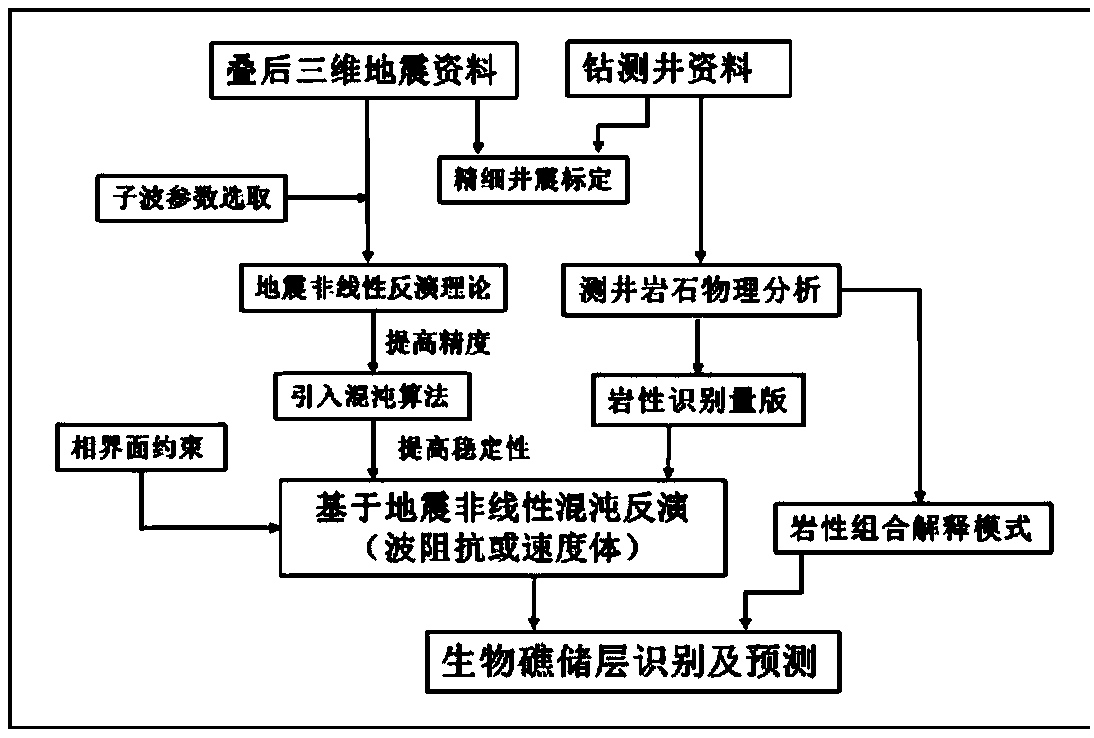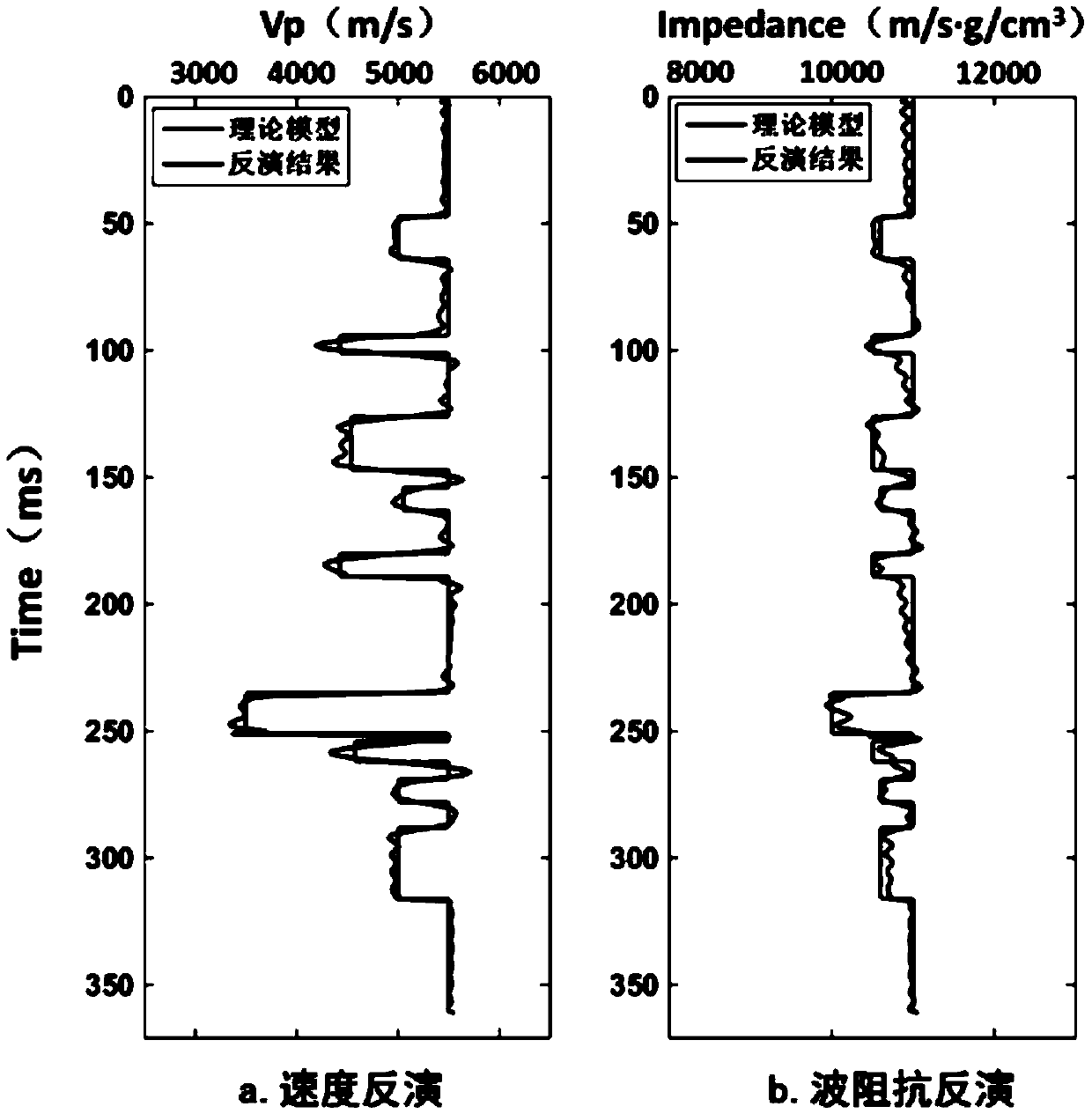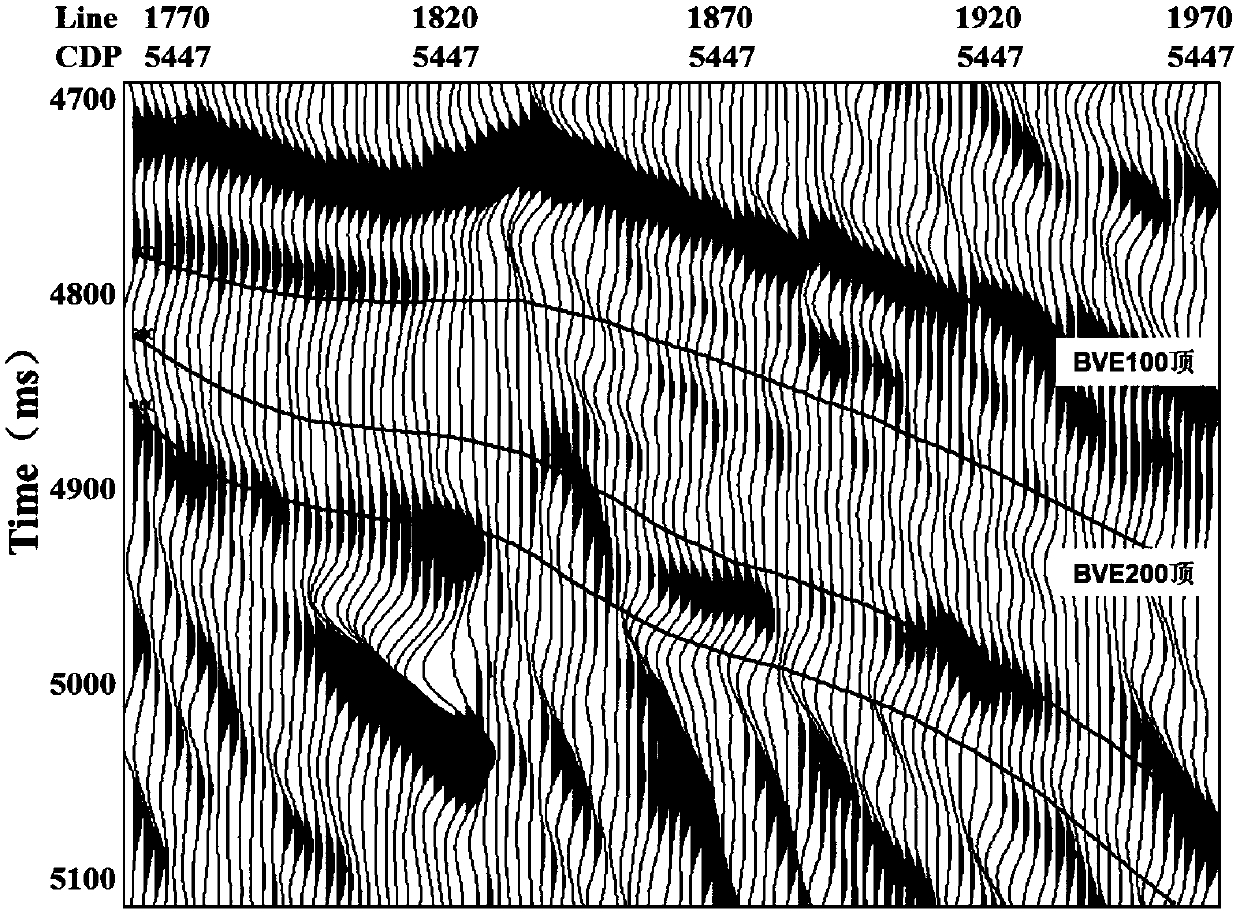Non-linear chaos algorithm-based reef reservoir identification method
A chaotic algorithm and reservoir identification technology, applied in geophysical measurement, measurement devices, instruments, etc., can solve problems such as high formation requirements, large thickness variation, and dependence
- Summary
- Abstract
- Description
- Claims
- Application Information
AI Technical Summary
Problems solved by technology
Method used
Image
Examples
Embodiment
[0148] On the basis of the previous inversion test, an oilfield in Brazil was selected as an example to conduct actual 3D seismic data tests on pre-salt carbonate reservoirs in the Santos Basin, Brazil, and carry out prediction research on reef reservoirs.
[0149] Overview of the work area
[0150] The area of post-stack 3D seismic data in the study area is 240km 2 , due to the absorption of salt rocks, the quality of pre-salt seismic data in this area is poor, and the main frequency is low, about 17Hz. as attached Figure 5 shown. The water depth of the oilfield is 2000-2400 meters, and the target layer is more than 5000 meters above the sea level under the thick salt rock. The BVE formation is the main oil layer under the salt. Drilling revealed that carbonate reservoirs are developed in this area, and some wells have good oil test results. Previous studies have shown that the main oil layer in this area is a set of microbial reef-shoal layers. It is difficult to ide...
PUM
 Login to View More
Login to View More Abstract
Description
Claims
Application Information
 Login to View More
Login to View More - R&D
- Intellectual Property
- Life Sciences
- Materials
- Tech Scout
- Unparalleled Data Quality
- Higher Quality Content
- 60% Fewer Hallucinations
Browse by: Latest US Patents, China's latest patents, Technical Efficacy Thesaurus, Application Domain, Technology Topic, Popular Technical Reports.
© 2025 PatSnap. All rights reserved.Legal|Privacy policy|Modern Slavery Act Transparency Statement|Sitemap|About US| Contact US: help@patsnap.com



